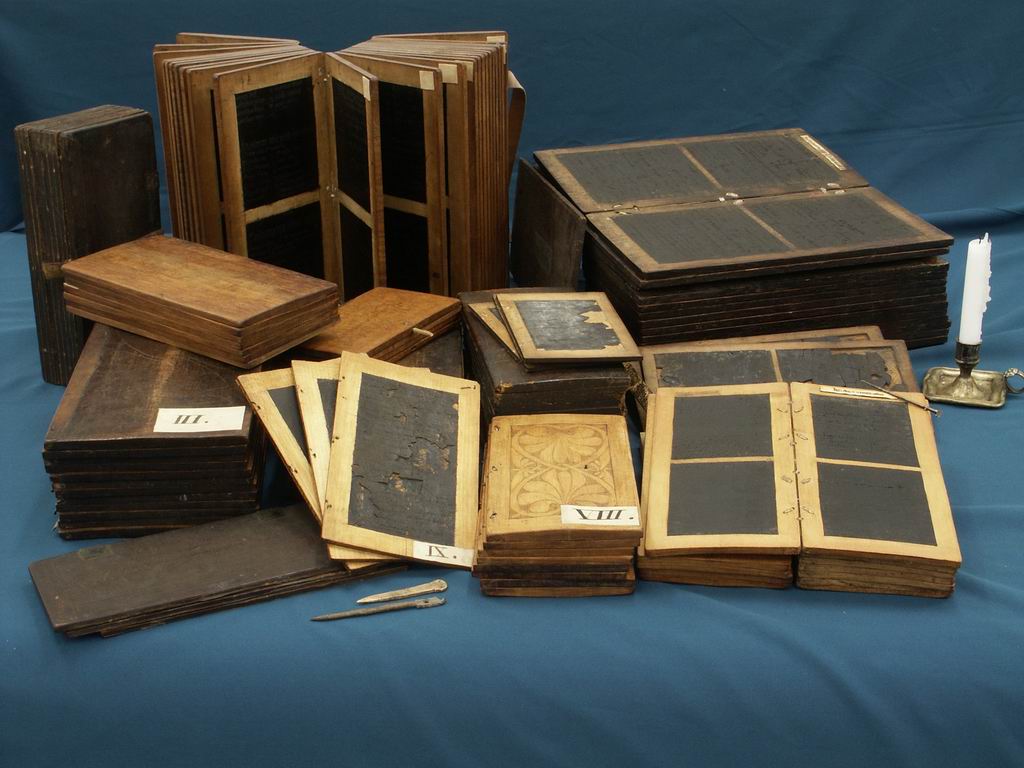Wax Tablets and the Stylus (Tools of the Trade)

Books were written similarly to how we write books today––just painfully slower. In John’s time the tool for developing a story was the wax tablet. These wax tablets were boards that had their interiors chiseled out to form a cavity. Wax was then poured into the cavity, forming a sunken inlay. The above image displays various wax tablets that were used prior to 1540 CE. as well as three styluses.
To write on a wax tablet the writer used a stylus––a sharp-ended instrument used to etch into the wax. In order to erase a word or letter, the wax simply needed to be melted where the mistake had occurred, and then once the wax had re-hardened, the correction could be etched in. The tablet itself was reusable since the wax could be scraped out and one could pour in new wax to prepare for another task. Today, we might ask, “Why would someone use a wax tablet instead of papyrus?” The answer is practicality. Papyrus was certainly cheaper than a wax tablet but since an author must typically make several hundred edits to a story, the tablets in the long run would, in fact, be cheaper. The ability to reuse them and the easy method for correction were the main reasons why it was the primary writing medium for everyone from the King’s scribes, down to the school child doing homework.
Wax tablets had another practical purpose in which they could be place side by side as well as end to end. The reason why this is important is it allows the author flexibility in composing the story. The author can move the wax tablets around to get the flow of the story the writer desires. The writer can also take two sections of a story from distant places and alter them so as to form a parallel with each other. Since the tablets had weight and were durable, the author can work with them outside without fear of the wind blowing them away or rain destroying them.